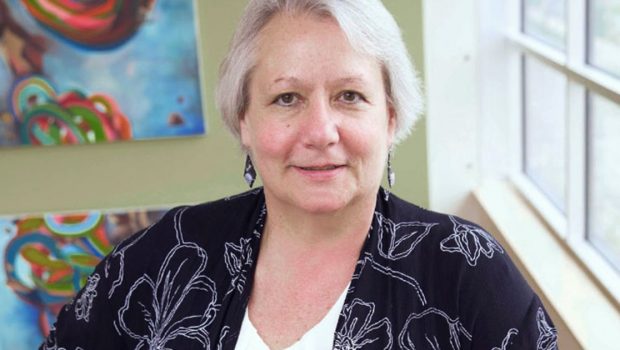Technology is proving to be a double-edged sword for the nonprofit sector.
That's one of several overarching themes emerging for nonprofits, according to "11 Trends in Philanthropy 2022," an annual report issued by the Dorothy A. Johnson Center for Philanthropy at Grand Valley State University.
The report calls out the opportunities presented for philanthropy with the reopening of Federal Pell Grants for incarcerated people, growth in giving to environmental and animal organizations and an increased focus on talent management and support.
But the report also identifies trends centered around emerging themes like the opportunities and pitfalls associated with technology, said Executive Director Teri Behrens, who helped develop the report during her 14-year tenure and plans to retire later this year.
Cryptocurrency, a digital or virtual currency that is secured by cryptography, is presenting a new frontier of donors for nonprofits.
The digital buying and selling is also helping attract new donors, typically young males who haven't typically been a driving force in donations in the past, Behrens said.
But the cryptocurrency market is unpredictable and unstable. Nonprofits need to be cautious about their policies and practices if they accept cryptocurrency donations, Behrens said. Some nonprofits keep all their cryptocurrency in a separate fund to benefit from rising values but don't count on it for daily expenses. Others sell it immediately and turn it into dollars so they don't have to manage the volatility.
Another downside to crypto is the amount of energy the blockchain network behind cryptocurrency markets takes to conduct the transactions on web-based platforms, Behrens said. "For organizations whose mission is to promote the public good, that's something to consider."
The same goes with Facebook. Nonprofits are increasingly questioning their use of the social media platform, according to the Johnson Center report.
Many have shut down their Facebook accounts because of the platform's role in promoting disinformation and civic unrest, Behrens said.
A third technology trend, however, is proving helpful for nonprofits. For-profits are increasingly making data they already collect available to nonprofits to support their work.
MasterCard Center for Inclusive Growth, for example, collects data for credit card transactions that helps nonprofits understand charitable giving and where it is happening so they can better target fundraising efforts, Behrens said.
LeaseUp has also helped identify available housing to help those without a place to call home get into housing more quickly.
That type of data is now available to nonprofits to analyze and use, most of it at no cost, Behrens said.
Yet another theme that showed in the trends is the emergence of a much more expansive way of thinking about philanthropy, Behrens said.
"Big gifts, like those from Mackenzie Scott grab headlines, but it's the smaller acts of giving and civic engagement that are important to healthy communities," she said.
"We're seeing people starting to do research and to write about volunteering, advocacy, all the different ways people give to make their communities better."
Donors of color are also increasingly mobilizing in support of their communities, according to the report, through things like giving circles, which bring individuals who've committed a certain amount of money to a pool that gifts will be made from as part of a larger group.
It's often people of very modest means coming together in giving circles, Behrens said. But it's an important trend to watch.
If you're a nonprofit, it's important to understand there are other ways of getting support, and if you're a donor, it's understanding there are other ways to come together to make impact, she said.
"Those gifts make a big impact by getting more people involved in giving," Behrens said.
The focus on inclusiveness that gained traction in 2020 is continuing, according to the report.
There is more divisiveness now with nonprofits organizing on different side of issues like abortion, voting rights and LBGTQ. But at the same time, philanthropy is working to be inclusive and stepping up its engagement with Native American communities and others, Behrens said.
"You can see pockets of the sector where there is a lot more tension and the culture wars are showing up but also parts of the sector focused on including marginalized groups," she said.
"Even at conferences here in Michigan, we hear people starting with land acknowledgments of what tribe originally lived on the land where the meeting is happening."








Gloss